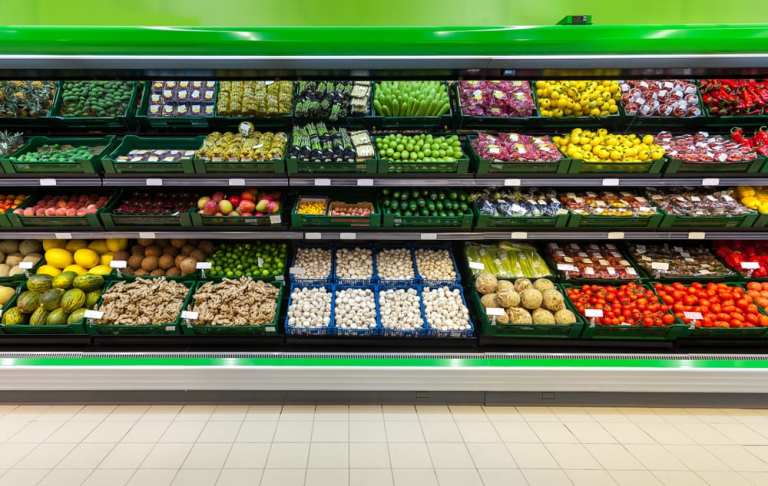
As of Monday morning (March 29), word on the global supply chain street was that Ever Given, a cargo ship that had lodged itself into a position blocking the flow of traffic within the Suez Canal, had been freed.
That’s the good news. The bad news is that, according to shipping conglomerate Maersk, the ramifications of this nearly weeklong blockage is likely to be felt throughout global supply chains for weeks. Ships that can now take the trade route must inform ports of their rescheduled arrivals, and the logistics of shipping and delivery must be entirely overhauled once more.
Sanjaye Elayattu, founder and president of grocery retailer supply chain solution provider Simplain, said it’s one of countless examples of just how important the ability to collaborate with B2B partners is in today’s ecosystem. Another glaring example of an unanticipated event that sent shockwaves through supply chains? The coronavirus of course.
In the last year or two, B2B trade has come head-to-head with historic disruptions that raised the curtain on this buyer-supplier collaboration need. But as Elayattu explained, businesses in the grocery supply chain need mechanisms to collaborate in order to ensure operations flow smoothly — and they need those mechanisms well before any headline-grabbing event occurs.
“Collaboration becomes more important,” he told PYMNTS in an interview. “The tracking of various activities, such as an item introduction, cost changes, the vendor’s capability of actually fulfilling a purchase order, and a retailer’s capability of actually paying in time — all of that communication becomes more important.”
Grocery’s Weak Spots
Every industry has its unique needs and challenges. For the grocery and food retail space, much of those pain points have to do with timing and information availability.
Due to the often-perishable nature of food products, coordinating the timing of the product listing, sale and delivery of items is as essential as it is for the buyer to procure and properly stock those items. Yet according to Elayattu, today’s workflows in B2B trade for this sector are far from agile.
“Getting new items onto the shelf quickly involves several steps, in terms of considering the product, actually finalizing that decision of what products you’re trying to bring into your mix, and getting that buyer-supplier relationship established,” he said. “And then, obviously, logistics, costs and discounts. This process can take weeks for a new item.”
In this context, shoppers’ demand for a wider variety of products is on the rise. Those end customers are also increasingly seeking more information about items that can be immensely valuable to both B2B buyers and retail sellers, often for the purposes of marketing that good through in-store demonstrations or advertising campaigns.
Grocery products must already include standardized nutritional information. Supplemental data about a product, like its organic or non-GMO certifications, or country of origin, creates a new level of burden on the supply chain to not only move goods, but move information with the product, too.
Finally, among the industry’s most prominent weak spots is the fact that often, retailers are sourcing from large-scale consumer packaged goods (CPG) suppliers, but typically like to throw smaller vendors like local bakeries or small businesses into the mix. While those smaller suppliers certainly add value and product diversification for grocers, Elayattu noted that they can lack technological sophistication and create new headaches for the processes by which retailers source, order and pay for those goods.
Efficiency Through Collaboration
The coordination required to provide the correct information back and forth between buyer and supplier is significant even without a global event like the coronavirus or Suez Canal blockage adding to the difficulty.
While the rise of B2B eCommerce and its proliferation through a variety of industries presents the digital platform to facilitate that collaboration, Elayattu noted that if done incorrectly, digital trading portals may not offer much benefit to either end of the B2B equation.
It’s critical for businesses that operate a supplier portal to onboard new vendors accurately from the get-go. That means obtaining their financial information and maintaining records on purchasing and payment agreements in order for accurate payments to be made at the appropriate time.
And while electronic invoicing is on the rise, digitizing that document in and of itself won’t be the magic key to efficiency.
“The vendor still wants visibility into that invoice,” he said. “Is it getting paid? Is it going to the right person? Am I getting paid for what I invoiced?”
He added that through purchase orders (POs) and electronic data interchange (EDI), the grocery arena has historically managed.
“They’ve been able to get away with having a basic description of the item, the cost, maybe some kind of logistics information. But now the demands of digitization happening across the industry are accelerated, especially … by COVID.”
He said the challenge is that many mechanisms to facilitate collaboration and data exchange, such as vendor portals or EDI, may work for standardized communications. But whether it’s an event as small as a product promotion, or as large as the blocking of the Suez Canal, these mechanisms typically lack the ability to enable communication between buyer and supplier to discuss and reconcile questions or disagreements.
Just as disruptions within the supply chain have wide-reaching ramifications, so too do efforts to digitize and streamline connectivity between buyer and supplier. Whether it’s securing an early payment discount, having visibility into the delivery of an item that can unlock payment, or securing information about a new product to stock it on the shelves before a competitor, digitization with collaboration in mind can have a major impact on supply chain efficiencies.